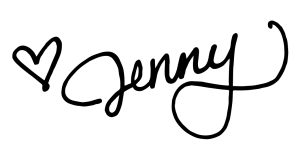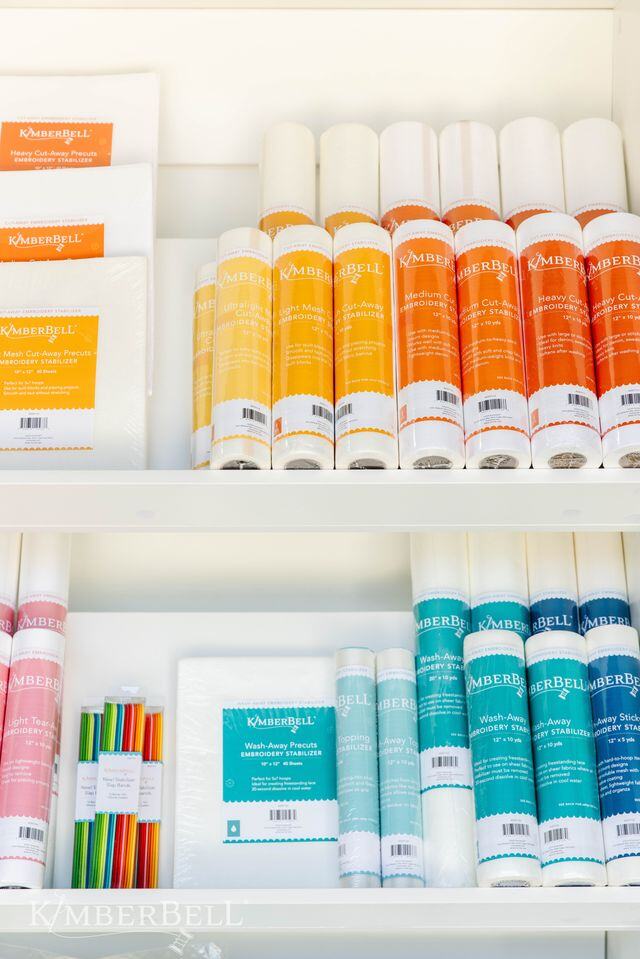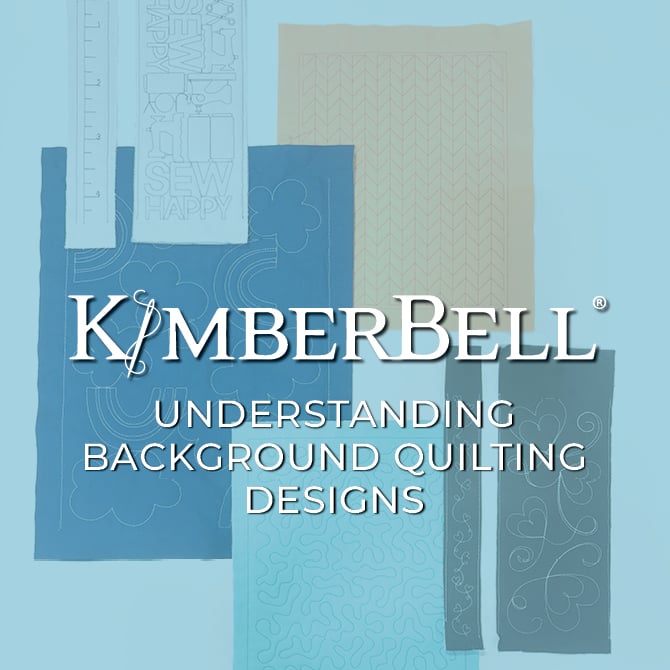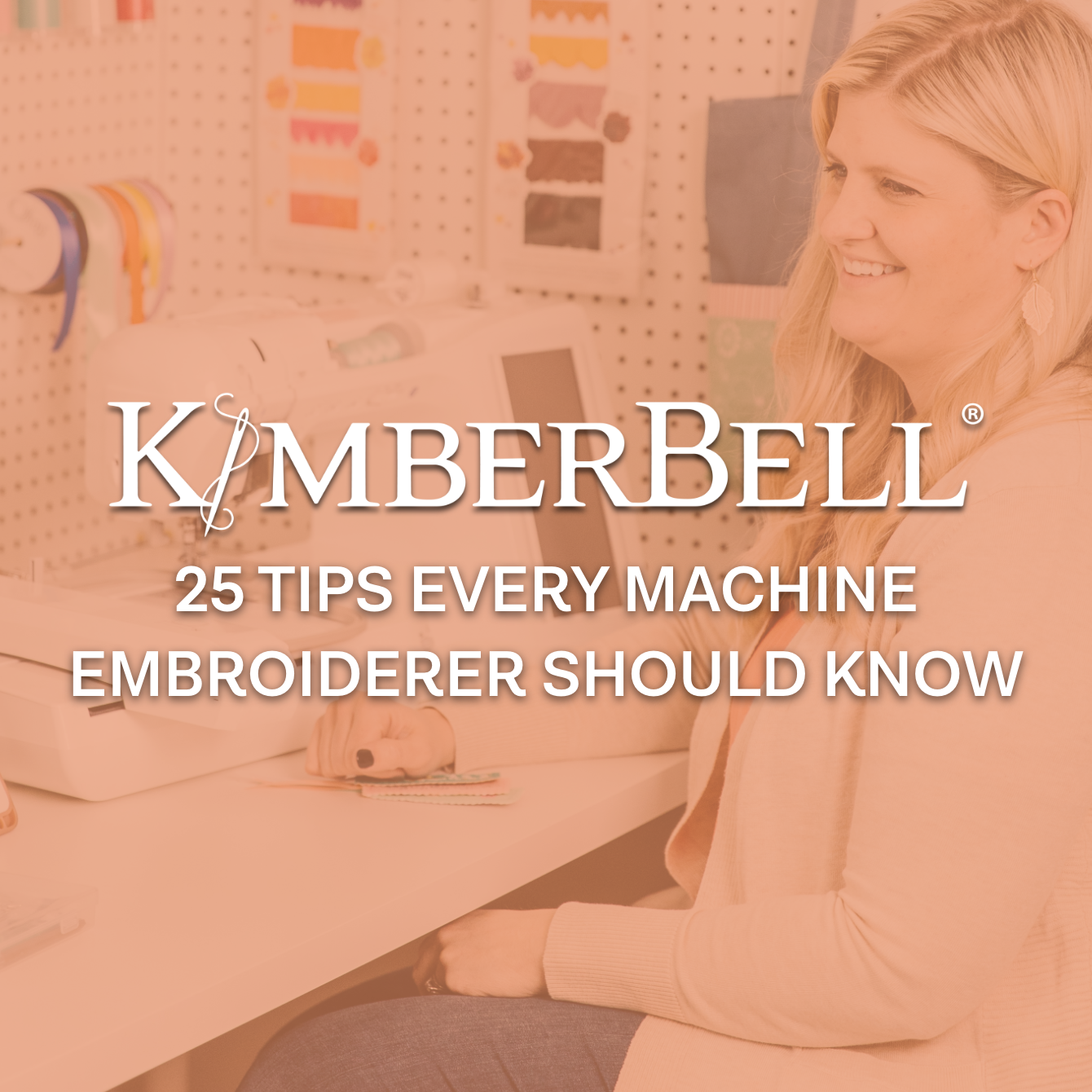Machine Embroidery Terminology & File Formats
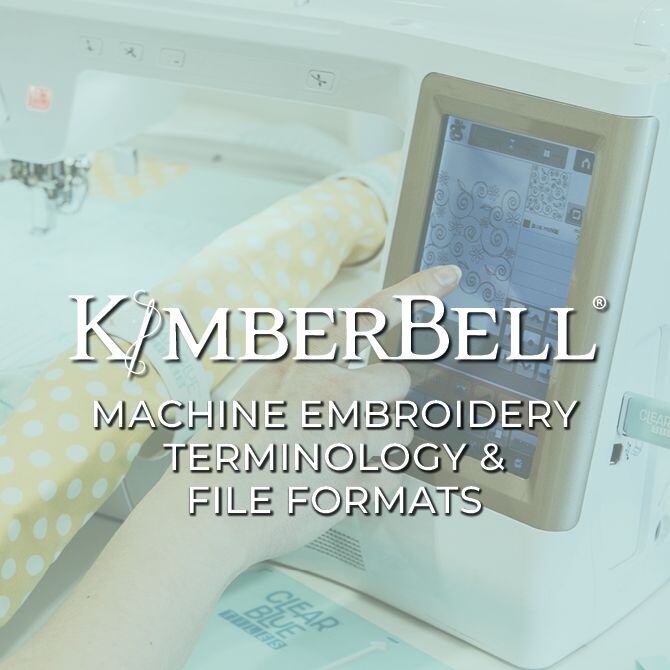
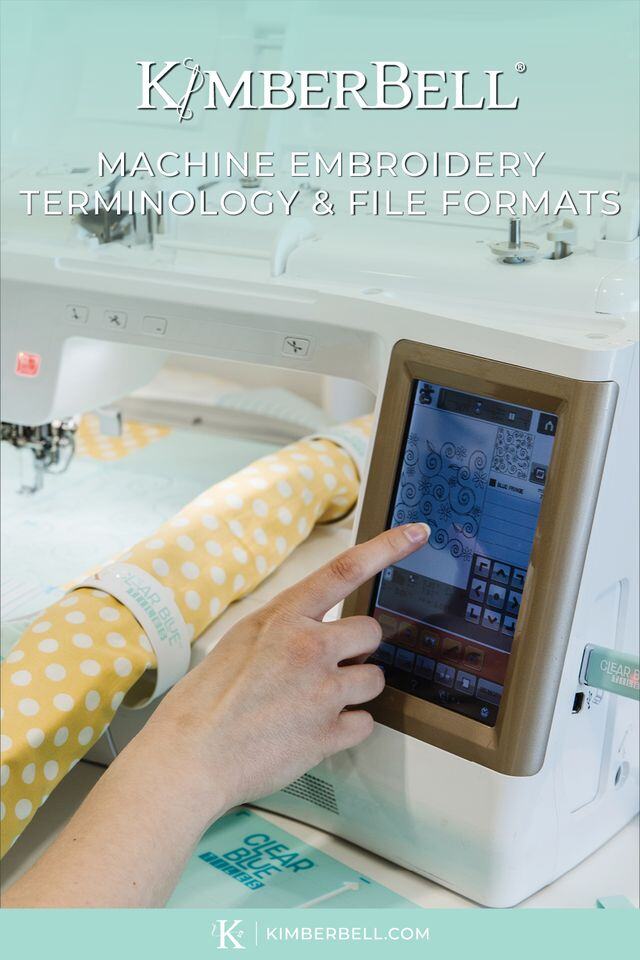
Whether you're new to machine embroidery or have been enjoying the hobby for years, there's a whole lexicon of specific-to-embroidery words you simply need to know!
Here's a look at some of the techniques and terms every machine embroiderer should be familiar with. (Please note that this glossary is in alphabetical order for easy reference.) 😊
Allover Quilting
A method of quilting a project after the blocks have been sewn together and assembled with batting and back fabric. Examples include traditional quilting or quilting with Clear Blue Tiles.
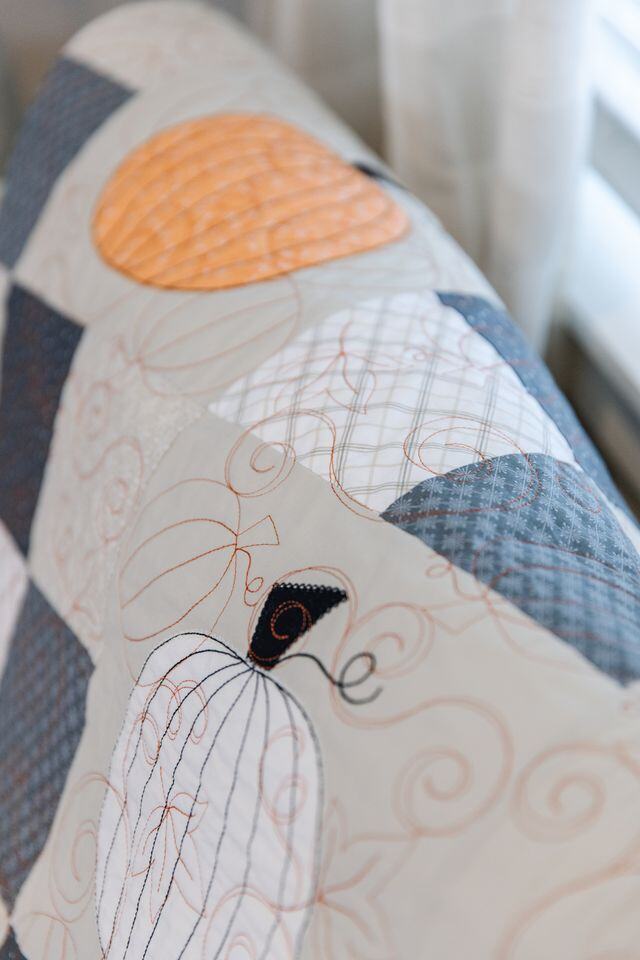
Applique
Applique is the process of sewing a separate piece of fabric (or an embellishment such as Embroidery Leather or Applique Glitter) into the design in place of stitches. Applique adds dimension and can include a variety of textures, elevating a design’s aesthetic appeal while decreasing the overall stitch count.
Batting Tack-Down Line
The batting tack-down line is a stitch inset from the seam so that the batting is not sewn into the seam when blocks are stitched together. This helps reduce bulk.
Bird Nesting
When thread tangles between the fabric being stitched and the needle plate. Bird nesting can cause thread breaks and sewing problems and often results from thread tensions being too loose, the machine not being threaded correctly, or the bobbin case not being inserted properly.
Bean Stitch
Similar to a run stitch but with three stitches placed back and forth between two points instead of a single stitch. Bean stitches are often used for outlining because they're bolder than run stitches. We often use bean stitches as a decorative top stitch (as shown by the white stitching on the word "hero" below).
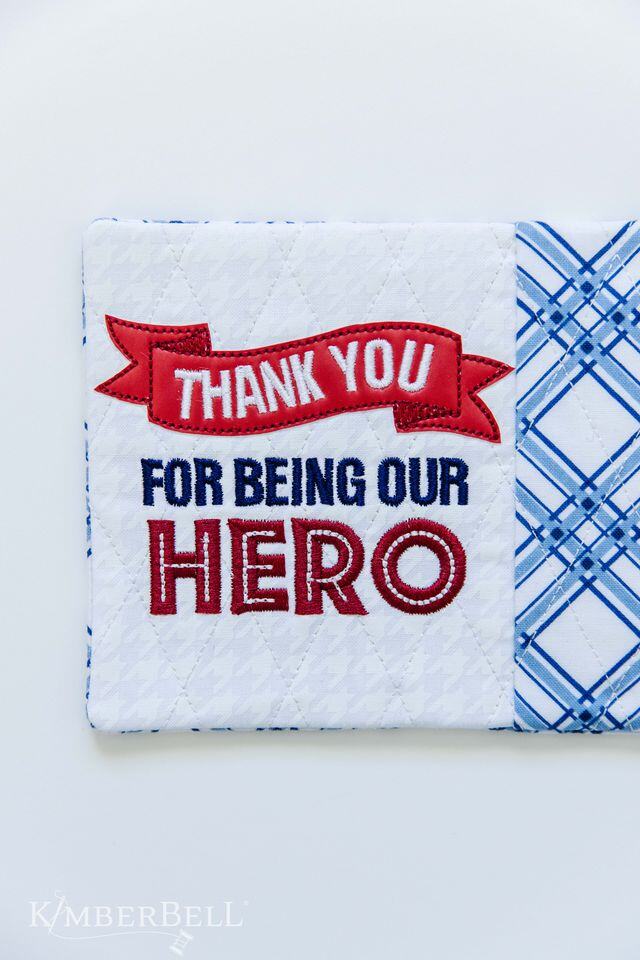
Block-by-Block Quilting
A quilting method where each block is quilted individually in-the-hoop before being sewn together into a larger project. For more information about our Block-by-Block quilting method, please click HERE.
Chenille
A textured embroidery technique that adds fuzzy dimension. At Kimberbell, we create chenille by layering three fabrics and then stitching rows. Fabric is then cut down the center of the rows and then fluffed with a nail file or chenille brush. For more information, please click HERE.
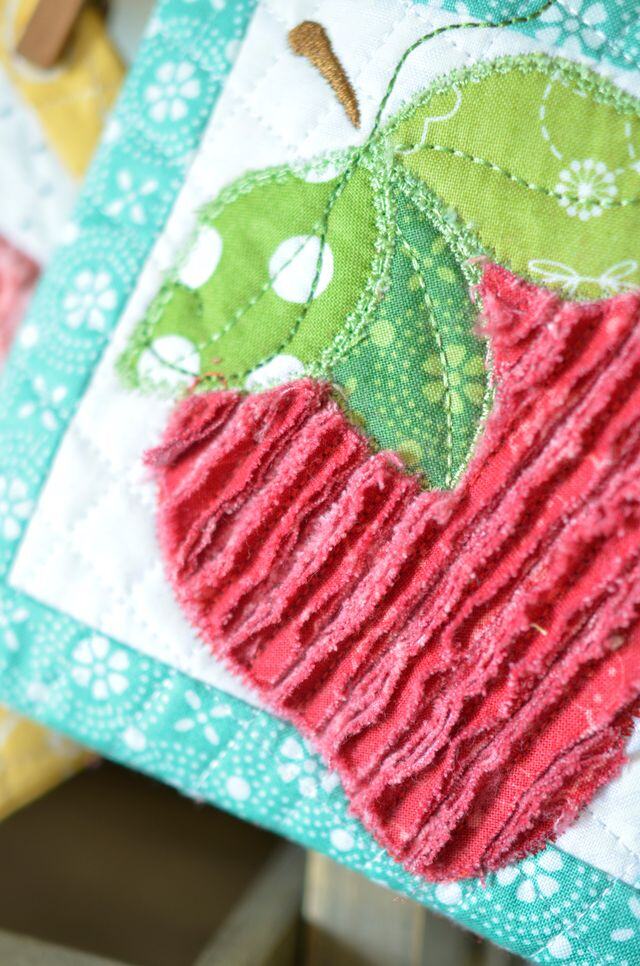
Clear Blue Tiles
Kimberbell’s patented system of tools, instructions, and files that allow you to quilt projects on a home embroidery machine (with results like you'd used a longarm machine). For more information about Kimberbell Clear Blue Tiles, please click HERE.
Cut-Away
A type of stabilizer used behind the fabric being embroidered to prevent shifting and pulling. Cut-Away is available in light, medium, and heavy weights and is trimmed with scissors after embroidery is done. When sewing feature quilts and bench pillows, stabilizer is trimmed to the same size as the background fabric.
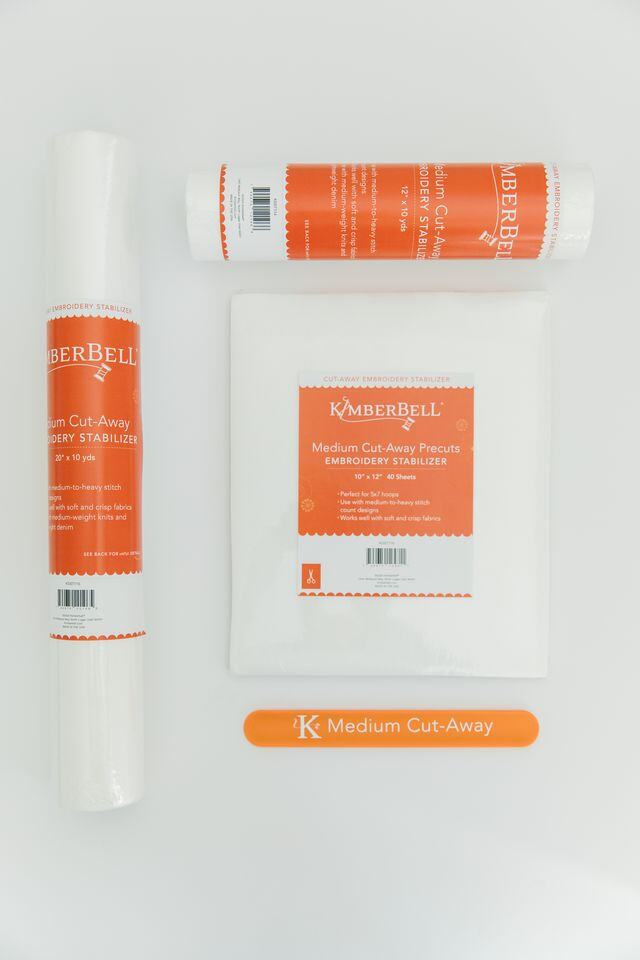
Digitize
Converting artwork into a computerized embroidery file, with each element of the design programmed as a specific stitch type. The digitized program controls every action of the embroidery machine.
Density
The number of stitches in a specific area.
Filler Block
A solid (not pieced) section of fabric used as an accent or to fill space in a quilted project.
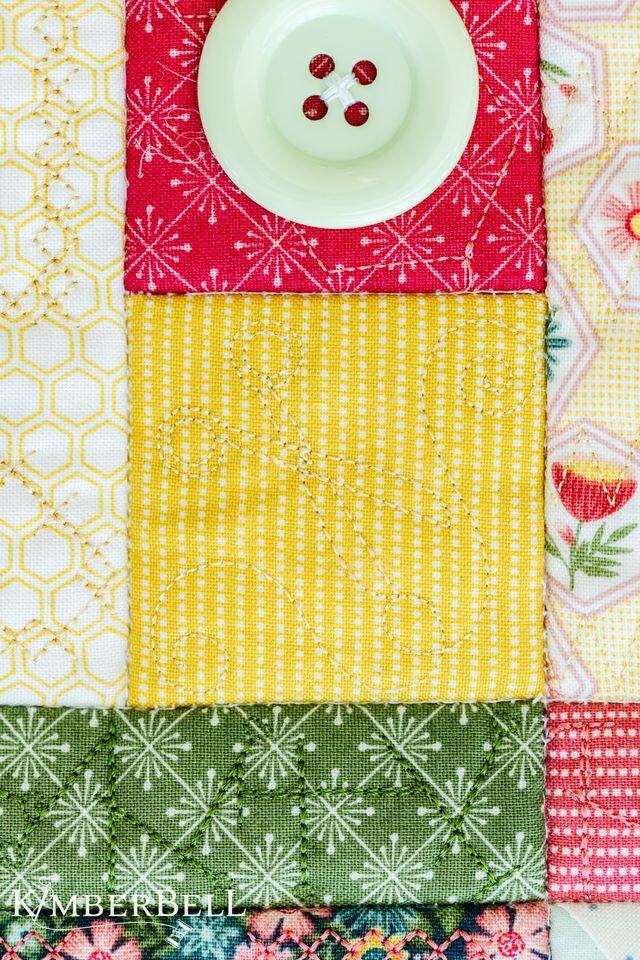
Embroidery Field
The maximum area a design will stitch. To accommodate the presser foot and needle, the embroidery field is smaller than the hoop (with a buffer on each side) so the needle doesn’t collide with the edge of the hoop.
File Format
Different embroidery machines read different languages, and those languages are the file formats. Embroiderers need to load the design with the right file extension for their machine (as shown below).
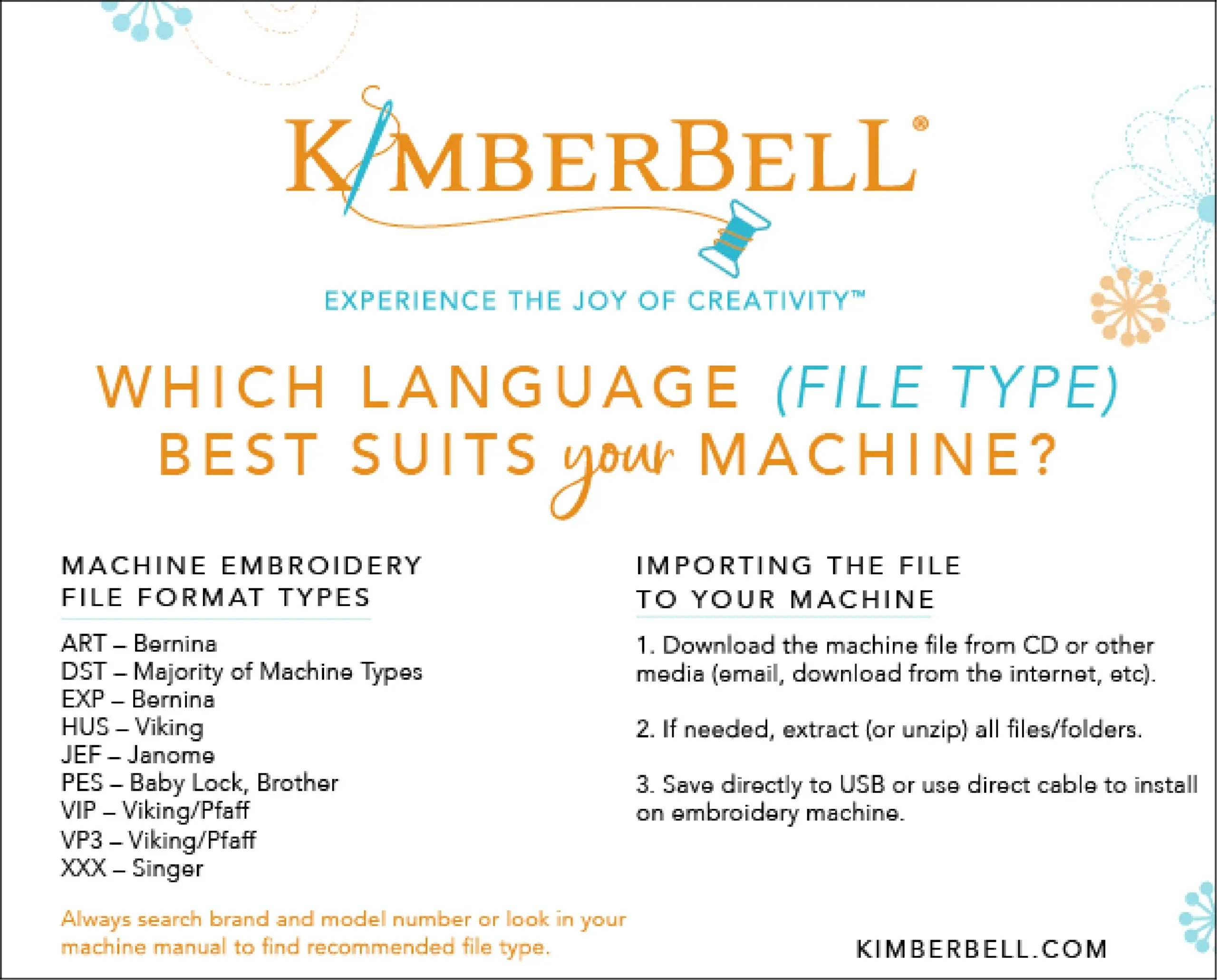
Fill Stitches
Also known as tatami stitches, fill stitches are made from a series of run stitches and are used to cover large areas. Fill stitches can run in multiple directions and have a generally flat look.
Float
When Sticky-Back stabilizer is hooped and the fabric or blank embroiderable is placed on top of the adhesive instead of being secured with the stabilizer inside the hoop. This technique is especially useful for hard-to-hoop items.
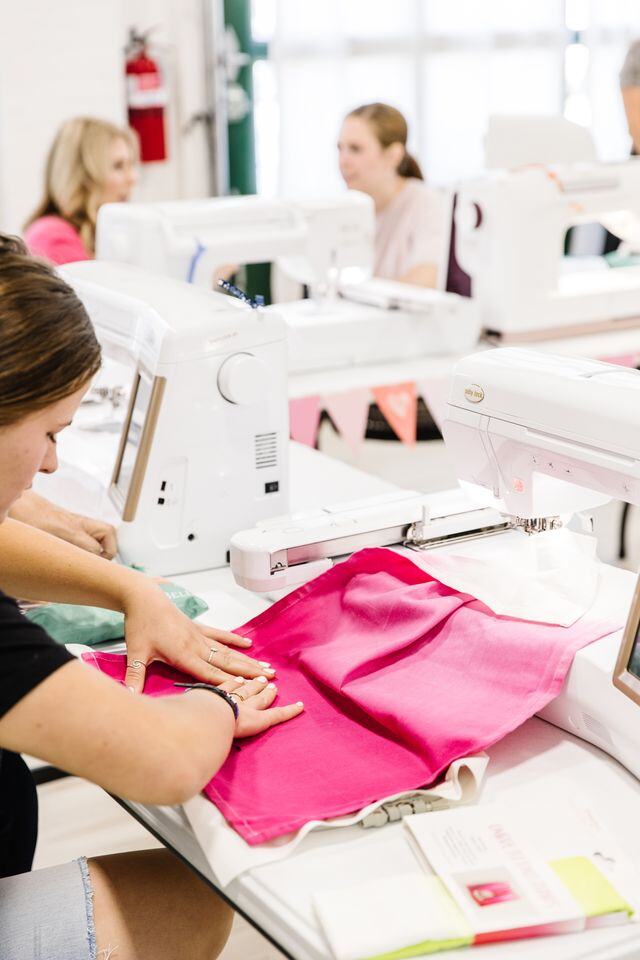
Flexible Foam
Kimberbell Flexi Foam provides a puffy dimension when stitched under fabric. Sticky-Back stabilizer is often used for floating since the item will adhere to the stabilizer without being hooped.
Fringe
An embroidery technique that creates dimensional loops. Fringe designs are digitized with rows of satin stitches held in place by a row of smaller satin stitching or fill stitches. The bobbin stitches are either dissolved or clipped from the back to make the fringe. Learn how to fringe HERE.
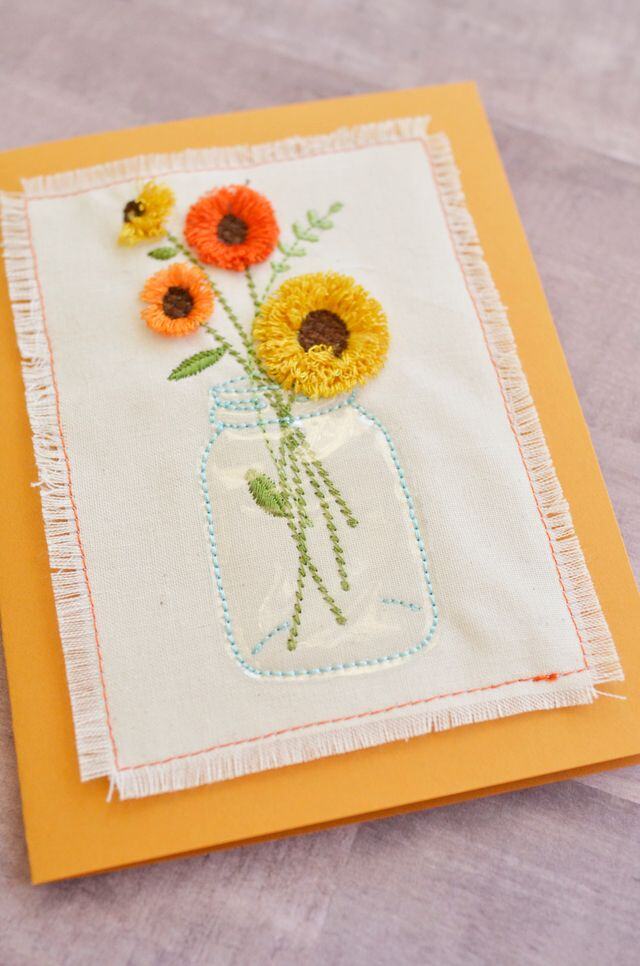
Hooping
The process where fabric and stabilizer are framed and secured inside the embroidery hoop.
Hoop Sizes
Hoop sizes are generally 4x4, 5x7, 6x10, 8x12, and 9x14. These sizes are not the same as the sewing field of an embroidery design. The design will always be smaller than the hoop, as the machine cannot sew too closely to the edge of the internal hoop.
In-the-Hoop
A project completed, from start to finish, within the embroidery hoop. For example, a Kimberbell Zipper Pouch is created entirely in-the-hoop, including the lining and the zipper.
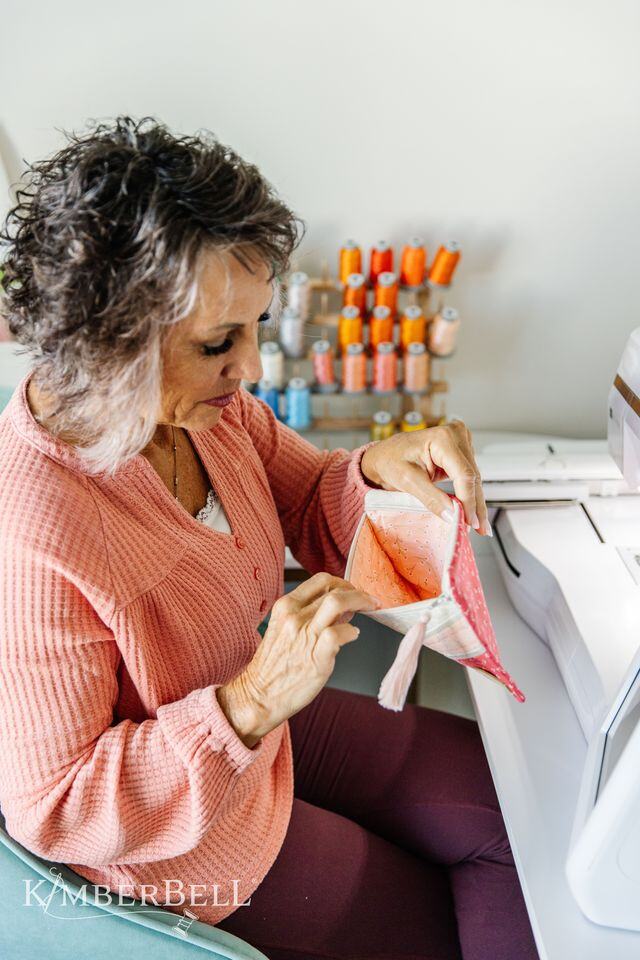
Jump Stitch
Jump stitches are used to move the needle from one point in an embroidery design to another, creating stitches that are longer than the machine would normally allow. These lines of thread may be clipped away. (Some machines automatically clip jump stitches.)
Needle
The device that carries the thread through the fabric to interlock with the bobbin thread. Commercial embroidery machines use needles with a round shank; home embroidery machines use needles with a flat-sided shank. Common needle sizes for home embroidery machines include 75/11, 80/12, and 90/14.
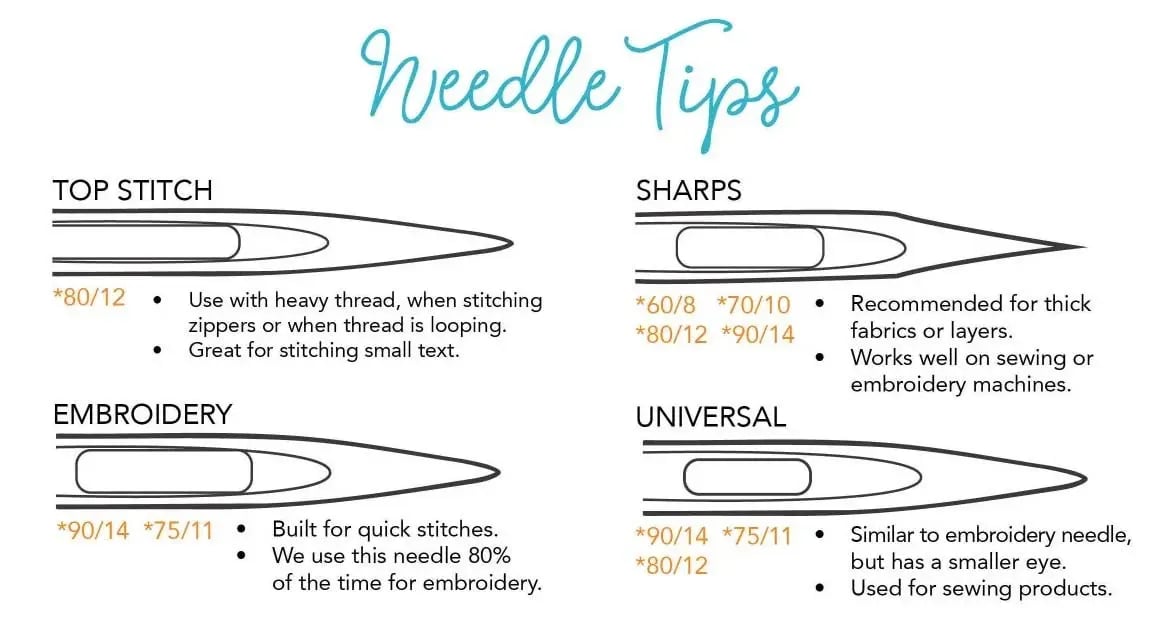
Pantograph
The pantograph is used to attach the hoop to the embroidery machine and can be moved on an X and Y axis.
Paper Tape
A semi-transparent tape used to secure fabric in-the-hoop for machine embroidery projects. Kimberbell Paper Tape does not leave sticky residue on the needle, easily tears away from stitches, and can be used on the underside of the hoop with success.
Piecing
Small pieces of fabric sewn together (often called patchwork). At Kimberbell, we've developed a very easy piecing in-the-hoop technique for the embroidery machine, which results in crisp edges and perfect points.
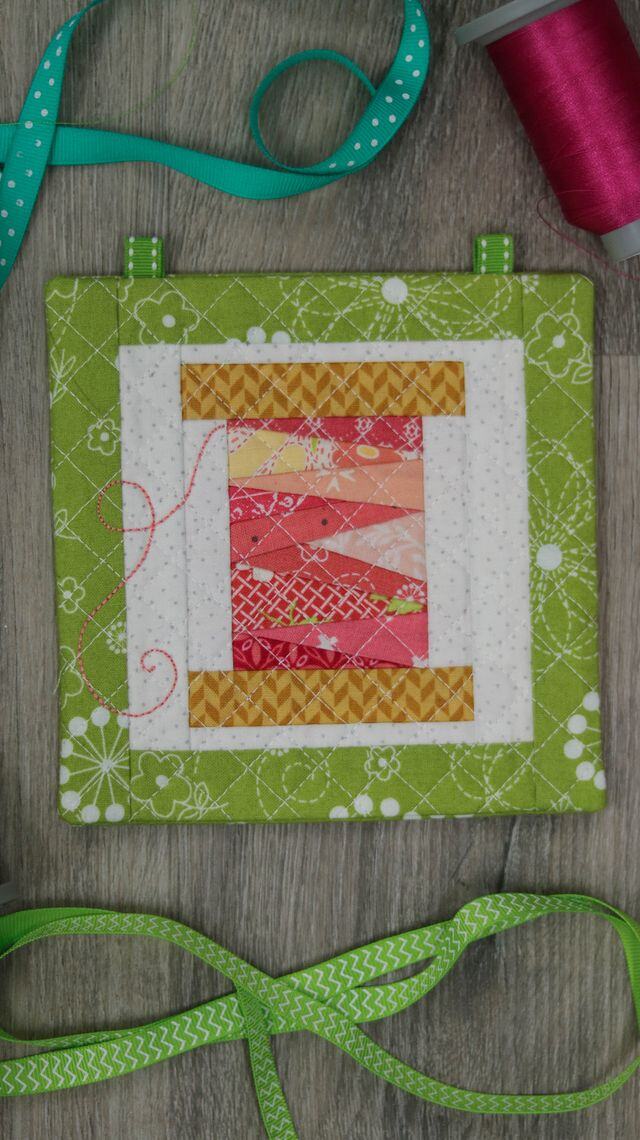
Placement Line
The initial stitches that show where to place applique fabric or embellishments.
Puckering
When fabric is gathered by the stitches, bunching into little puckers. Puckering is often caused by loose hooping, insufficient stabilizer, and/or incorrect thread tensions or stitch density.
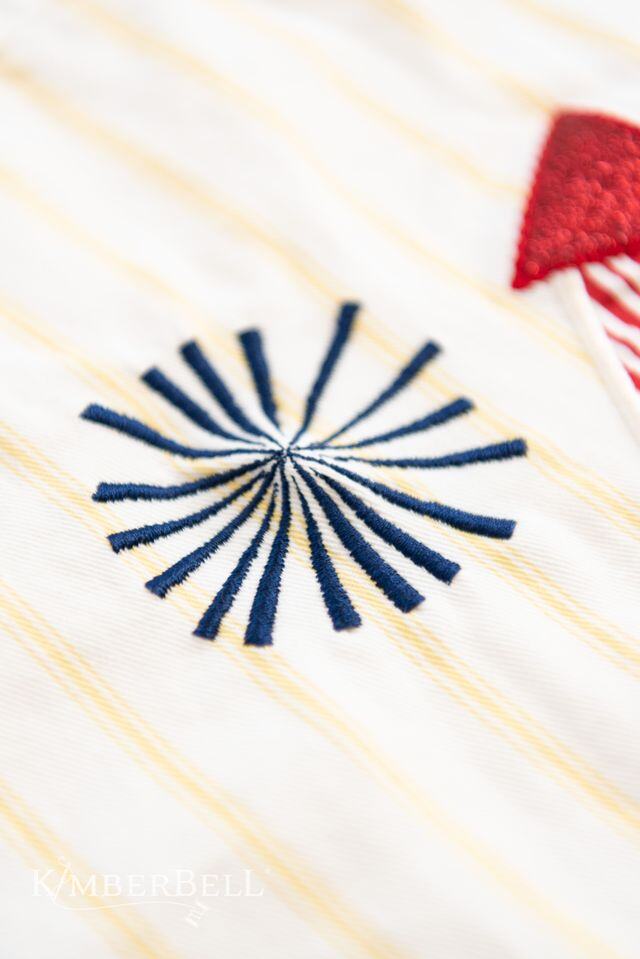
Push and Pull Compensation
Stitches always push and pull the fabric during the embroidery process. Digitizers program a degree of intentional distortion into the embroidery design to compensate for this shifting.
Run Stitches
Run stitches (or running stitches) are made when a single stitch is formed between two points. (Bean stitches are similar to run stitches but with three stitches placed back and forth between two points.)
Satin Stitches
Satin stitches (or column stitches) are made from very closely placed zigzag stitches for bold stitching. Satin stitches are often used for borders, lettering, and for covering the raw edges of applique fabric. This rain boot is edged in satin stitches.
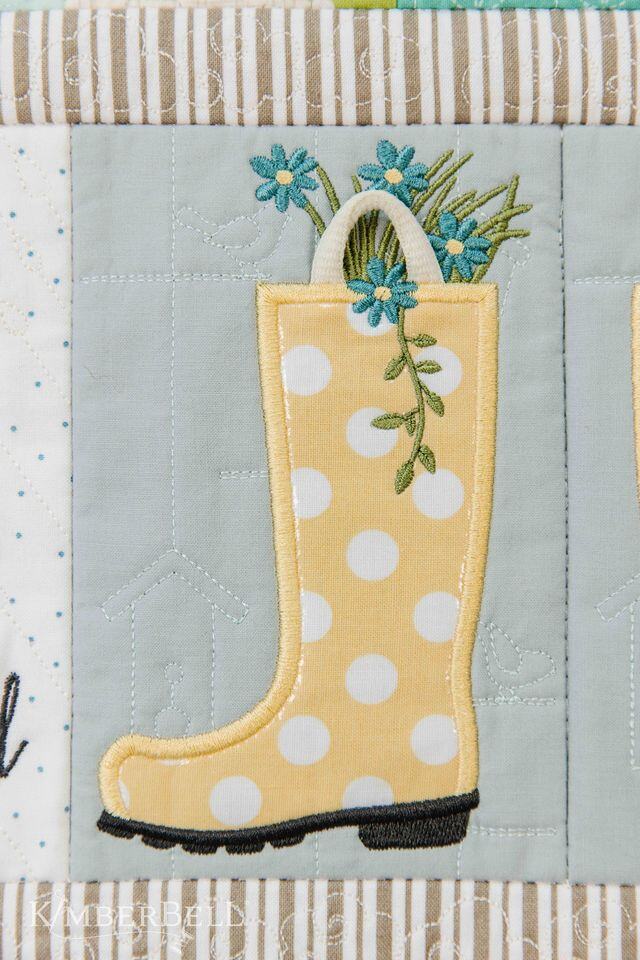
SPI
Abbreviation for Stitches Per Inch.
SPM
Abbreviation for Stitches Per Minute.
Stabilizer
A woven or non-woven material used underneath the item being embroidered. Stabilizer provides support, prevents shifting during embroidery, and is available in a variety of types and weights. Kimberbell Stabilizer is color-coded so you can easily find exactly what you need.
Stitch Count
The number of stitches used in an embroidery design.
Tack-Down Stitch
The initial stitches that hold applique fabric or embellishments in place.
Tear-Away
Stabilizer used behind fabric being embroidered to prevent shifting and pulling. Tear-Away is available in various weights and tears easily away after embroidery is complete.
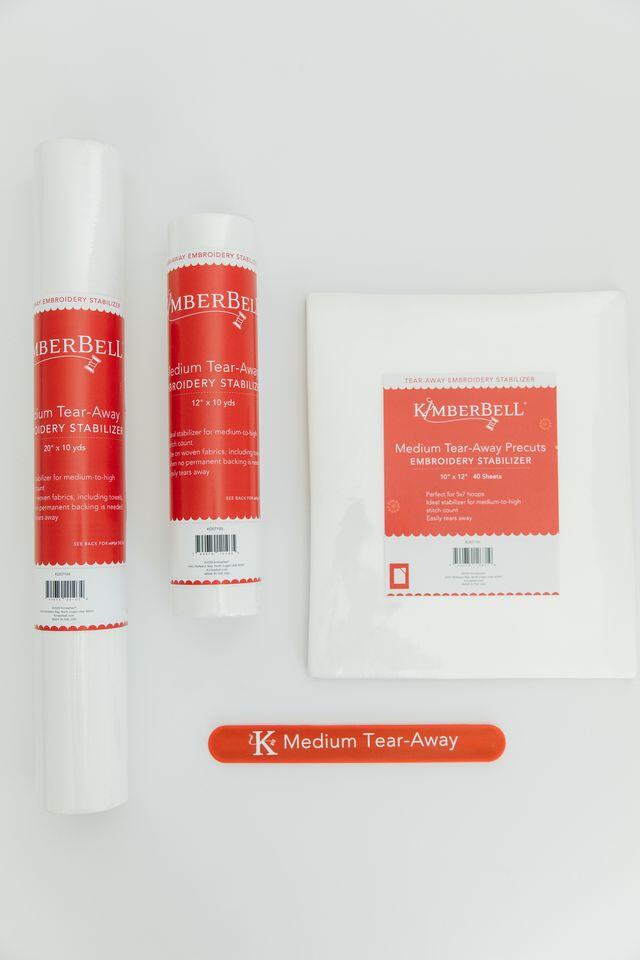
Tension
Tension is the tautness of the thread. When looking at the underside of a satin (column) stitch, about ⅔ of the thread should be needle thread and ⅓ should be bobbin thread. Tensions can be adjusted on a machine or bobbin.
Topping
Stabilizer placed on top of fabric being embroidered to prevent stitches from sinking into the pile. Topping rips away after embroidery and includes Iron-Away and Wash-Away.
Underlay
Stitching put underneath the embroidery design to stabilize the fabric and raise the design so detail isn’t lost.
Wash-Away
Stabilizer that dissolves in water after embroidery. Projects such as freestanding lace are embroidered on Wash-Away. After rinsing the design in water, only the stitching is left behind.
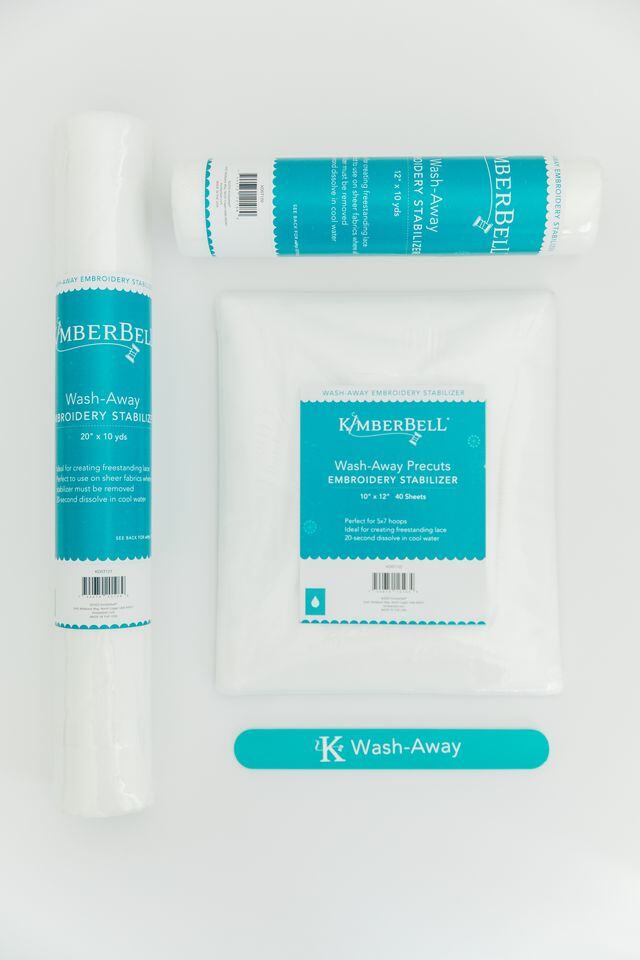
I hope this helps you feel more familiar with the terms you'll hear in the wonderful world of machine embroidery! Please share this post with anyone new to our hobby or just keep it on hand for yourself as a reference.
For even more information about machine embroidery terms and techniques, you can download our FREE Resource Guide HERE. The Resource Guide includes images, diagrams, and how-tos you won't want to miss!
Happy Stitching! 😊
